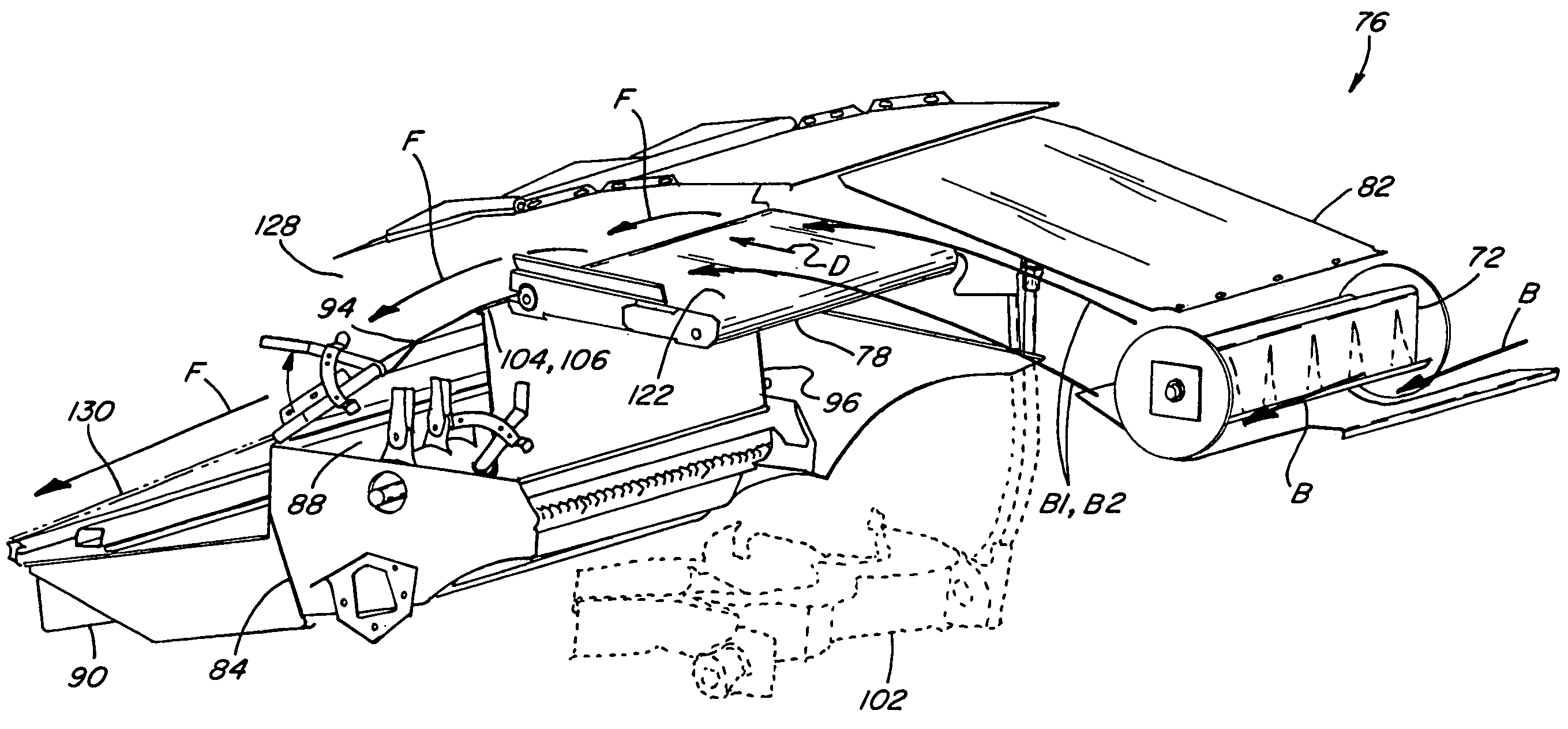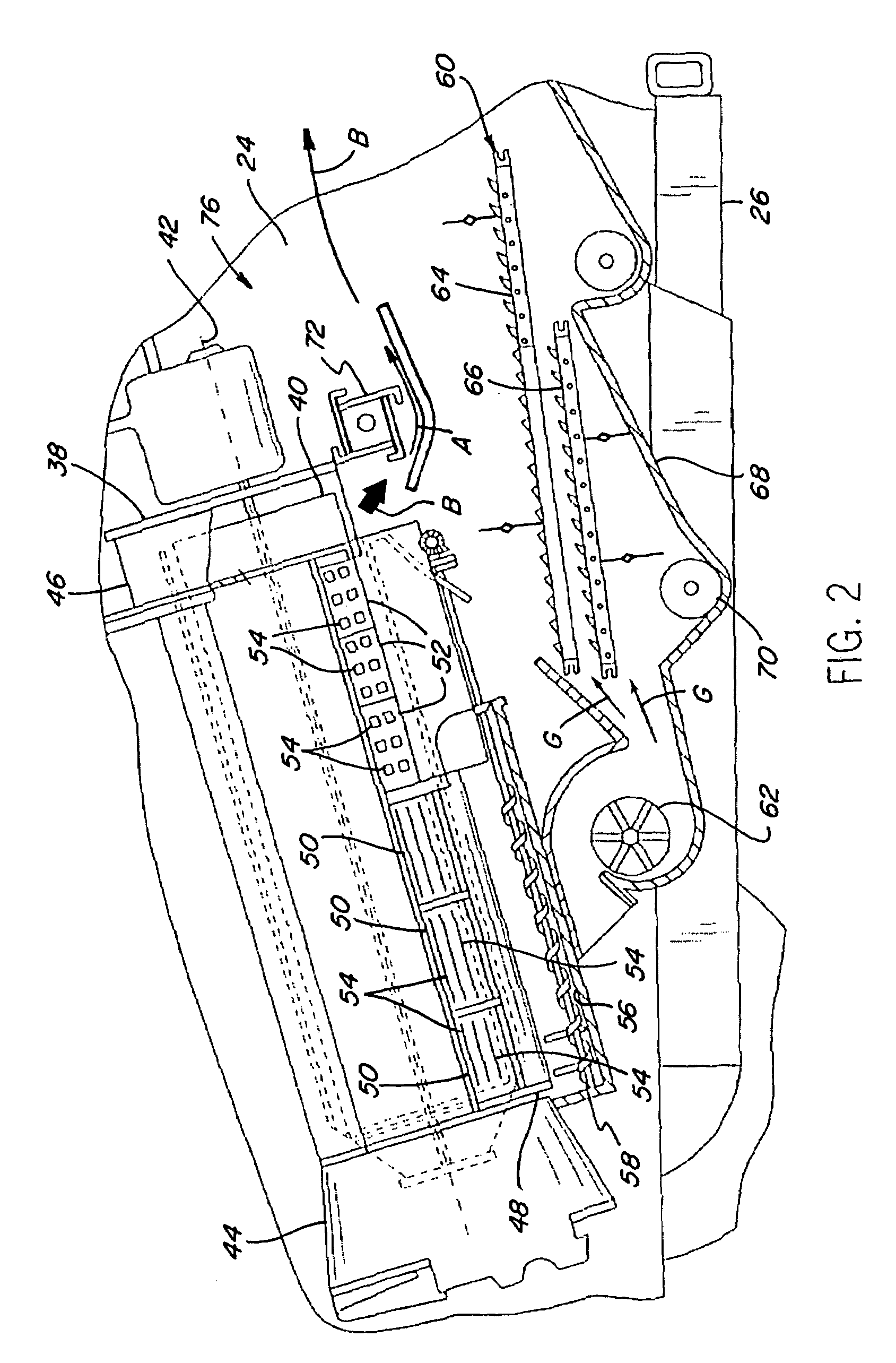System and method for positively discharging crop residue from a combine
a technology of positive discharge and combine, which is applied in the direction of mowers, agriculture tools and machines, agriculture, etc., can solve the problems of limited material handling capacity or rate, crank mechanism add complexity and vibration, and slow operation, so as to achieve faster drying, reduce or shorten the cutting of stubble, and increase the yield of straw
- Summary
- Abstract
- Description
- Claims
- Application Information
AI Technical Summary
Benefits of technology
Problems solved by technology
Method used
Image
Examples
Embodiment Construction
[0044]Referring to the drawings, FIG. 1 shows a self-propelled rotary combine 20 that includes a housing or body 22 defining an internal open area or space 24. While a conventional rotary combine is shown, it is anticipated that the present invention could be used with any type of combine, such as a conventional combine having a threshing cylinder and separation beaters (not shown) or a hybrid combine having a threshing cylinder and rotors (not shown). However, for ease of explanation, the present invention will be discussed hereinafter in conjunction with a self-propelled rotary combine 20 as illustrated by FIG. 1.
[0045]The body 22 of the combine 20, which can include a supporting frame 26, is supported on front drive wheels 28 and steerable rear wheels 30. The combine 20 is powered by an engine (not shown) and controlled from an operator's station 32.
[0046]A crop harvesting apparatus, otherwise referred to as a header 34, and an infeed mechanism 36 are attached at a forward end of...
PUM
 Login to View More
Login to View More Abstract
Description
Claims
Application Information
 Login to View More
Login to View More - R&D
- Intellectual Property
- Life Sciences
- Materials
- Tech Scout
- Unparalleled Data Quality
- Higher Quality Content
- 60% Fewer Hallucinations
Browse by: Latest US Patents, China's latest patents, Technical Efficacy Thesaurus, Application Domain, Technology Topic, Popular Technical Reports.
© 2025 PatSnap. All rights reserved.Legal|Privacy policy|Modern Slavery Act Transparency Statement|Sitemap|About US| Contact US: help@patsnap.com



